Last Updated on April 5, 2024
Estimated reading time: 11 minutes
Updated for 2023
By Jim Ferri
Much as it did for cities in the Middle East, in the late 20th century oil money transformed Oslo into one of the most interesting cities in northern Europe.
Fueled with wealth from the North Sea, the Norwegian capital underwent a Renaissance that changed the face of the city. The best place to see this transformation is about the harbor. Where decaying shipyards and industrial areas once stood are stunning new buildings, lively cafés and a vibrant cultural scene.
See the Opera House and the “Iceberg” in the Harbor
The most visible fragment of that rebirth is the Oslo Opera House, home of The Norwegian National Opera and Ballet. It’s often compared to an iceberg for the way its jagged shape seemingly rises up out of the water. You’ll find its long sloping roof, up which you can walk, provides beautiful views over the harbor and the city.
From this rooftop perch look across the harbor and to your left you’ll see another iceberg floating nearby. It’s a mass of glass anchored to the fjord, looking as if it just drifted in. To the right is an architectural project locally called the “Barcode Buildings.” Thery’re a row of office and residential units reminiscence of the stripes on a barcode.
A Best Thing to Do: Spend Time in Aker Brygge
Straight ahead across the harbor you’ll see Aker Brygge. It’s a former shipyard now a hip and attractive car-free area filled with shops, restaurants and cafés. Anchored to it by a small bridge is Tjunholmen, the city’s newest glittering borough. Once an industrial area, it’s actually two small islands. Both are chockablock with galleries, restaurants and Oslo’s Museum of Modern Art. Next to the museum is the upscale hotel The Thief, with art and high-tech luxury suites. Even if you’re not a guest drop in for a look.
As you look out from your operatic perch it’s hard to believe that the city has more than 600,000 residents. Though spread out over an expanse four times the area of Paris, it has plenty of green space throughout it. “Blue and green with the city in between,” say the tour guides, referring to the blue fjord and the green forests that surround the Norwegian capital.
Walk Up Karl Johans Gate
Oslo is a walking city and the opera house is only a five-minute walk from Central Station. From there in about 15 minutes you can walk in a straight line up Karl Johans Gate, the city’s Champs-Élysées, to the Royal Palace. Go after lunch and you can see the changing of the guard at 1:30 PM.
Taking a leisurely walk up Karl Johans Gate I came to the Grand Hotel. It’s a beautiful Old-World style hotel. Every year on December 10 the Nobel Peace Prize Laureate is accommodated here and the annual Nobel Banquet held. The City Hall, where the Peace Prize is awarded, is back down on the harbor.
One of the Best Things to Do in Oslo: Visit Vigeland Park
Instead of continuing on to the palace I opted instead to hop aboard tram #12. It would take me to the incredible Vigeland Park, a monumental sculpture park and the most popular attraction in Norway. It is an incredible park, and walking about it is once of the very best things to do in Oslo.
There are 212 life-size sculptures in the park, all created by Norwegian sculptor Gustav Vigeland. The nude sculptures show the breath of humanity in all stages of life. The center of it all a 50-foot-tall monolith carved from a single rock.
The sculpture park is actually part of Frogner Park, and visiting it was a wonderful experience. It is really a great place just to wander around for a few hours. And it’s not just for those interested in sculpture. Walk about making your personal interpretation of what each statue represents, judging by the expressions on their faces. It’s a fascinating.
More Top Sites to Visit on the Bygdøy Peninsula
You can see more of the Vigeland’s work, including drawings, woodcuts and more sculptures, at the adjacent Vigeland Museum. The city originally built the museum as a residence and studio for the sculptor. In exchange he promised the city a large portion of his work after his death.
From the park I took the #30 bus out to what Frommer’s wisely calls the “Museum-loaded Bygdøy Peninsula.” It’s a spit of land on the far side of the harbor that holds four of the city’s popular museums.
My first stop was at the Norsk Folkemuseum, aka the Norwegian Museum of Cultural History. It is an outdoor museum with more than 150 buildings from all over Norway. They include houses, barns, storehouses and also a 13th-century stave church. If you’re a fan of outdoor museums you can easily stay the whole day here. I wanted to but also wanted to visit the three others, so I watched my time.
The museum is open daily May 1–September 30 10am–5pm / October 1–April 11am–4pm. It is closed Christmas Eve, Christmas Day, January 1st and May 17th. Admission fees differ by the season.
Another Best Thing to Do in Oslo: Visit the Viking Ship Museum
My next stop on the bus was the popular Viking Ship Museum, just a few minutes away and which you could mistake for a church if you weren’t aware of the stop. It’s spectacular little museum and the closest you’ll ever get to the ancient Vikings. But step inside and you’ll find three 9th-century Viking longships, all unearthed from burial mounds in Norway. Along with the ships are funeral offerings found on the vessels including chests, tapestries and ceremonial sleighs.
Unfortunately, it’s currently closed for major renovations and will reopen in 2025 as The Museum of the Viking Age.
After leaving the Viking Museum I took the bus to the end of the line, another five minutes down the peninsula. There I found two other museums: the Kon-Tiki Museum and the Fram Museum.
The Kon-Tiki and Fram Museums, Great Places to Visit
Kon-Tiki is dedicated to the famous Norwegian adventurer Thor Heyerdahl. It’s quite interesting to look at the fragile-looking papyrus and balsa wood vessels that Heyerdahl constructed. He did so to sail across the Atlantic and Pacific Oceans to demonstrate how contact was possible between ancient civilizations on different continents. Admission fees and opening hours vary.
Across the road is the Fram Museum. It provides a first-hand look at how Norwegian explorer Roald Amundsen made his epic 1911 journey to the South Pole. The dull white and blue lighting in the museum also provides a sense of what it must have been like sailing in such conditions. As with the Kon-Tiki Museum, admission fees and opening hours at the Fram Museum vary.
The Fram is the ship Amundsen and his crew sailed through the Antarctic, and in addition to finding all the explanations in the galleries fascinating, you also have the opportunity of actually going on board the ship itself. I wandered all over the ship and was amazed at the things the crew had brought along, not only needed navigational and medical equipment, but also a piano. You’re given so much free rein to wander about that they’ve had to post signs telling you it’s prohibited to climb up the rigging.
Once outside the museum, instead of taking the bus back downtown I opted for a 10-minute ride on a small ferry across the harbor. We docked right near City Hall and the Nobel Peace Center, the latter a fascinating place that hosts a permanent exhibition as well as changing ones.
Visit Oslo’s Many Art Museums
If you turn right when you walk out of the Center you’ll be walking back through Aker Brygge towards Tjunholmen. Wander along the boardwalk here and admire the area, or stop in one of the many cafés, as I did, for a quick bite. Then continue walking up the boardwalk to the Astrup Fearnley Museum of Modern Art (Warhol, Jeff Koons, Nauman, Sherman, etc.) in its spectacular home in Tjunholmen.
The museum is open Tuesday, Wednesday and Friday noon–5pm / Thursday noon–7pm / closed Monday. Admission is Adult: NOK 150 / Student / Senior: NOK 100 / under 18 years and holders of the Oslo Pass free.
You may also enjoy: Bergen, Norway – Scandinavia’s Beautiful Coastal City / European Museums: 6 “Don’t Miss” Small Gems / Flam Railway From Bergen
If you’re interested in other museums you’ll also find the country’s largest collection of art at the National Gallery (works by Edvard Munch, El Greco, Matisse and a pallete of others). You can see Munch’s famous “The Scream” here, as well as at the Munch Museum (since he created several versions of the famous painting) as well as more than 1,000 other pieces of his works.
Back near City Hall the Stenersen Museum displays a collection of Norwegian art from the mid-19th to the mid-20th centuries.
The Best Things to Do in Oslo, Without Going Broke
I spent two days in Oslo but easily could have spent another day or two to see more of the city and its surroundings. And yes, while doubling my time in the city would have doubled the expense, I found that Oslo could be much less expensive than many people perceive. It’s not an inexpensive city but, on the other hand, there are many ways to visit it without breaking the bank. See How to Travel About Scandinavia on a Budget for 2 Weeks.
TripAdvisor may rank Oslo as expensive (other cost-of-living rankings place it far down the list) but its rankings are based on staying at a four-star luxury hotel and a dinner for two at a five-star luxury hotel restaurant. Obviously, there are many other hotel and restaurant options one can find for considerably less.
While TA’s dinner bill came to almost $290, I had a good pasta dinner with a glass of wine for less than $38. And all over the city I found sandwiches for lunch for less than $10. Obviously, it’s well worthwhile looking past the numbers on any survey you see. Websites will also show numerous hotel deals outside of the high season.
If you want to keep costs down one of the good deals you’ll find is the Oslo Pass. The cost for an adult is about $52 / €44 for 24 hours, $76 / €65 for 48 hours, and $95 / €81 for 72 hours all less than half the price of the standard adult cost. For seniors (67+) the cost is approximately 20% less.
It provides free entrance to more than three dozens museums and galleries including the Nobel Peace Center, unlimited free travel by public transportation, etc.
If You Go:
Innovation Norway
655 Third Avenue, 18th floor
New York , N.Y. 10017, USA
Tel: (212) 885-9700
The Thief Hotel
Landgangen 1
0252 Oslo
Tel: +47 24 00 40 00

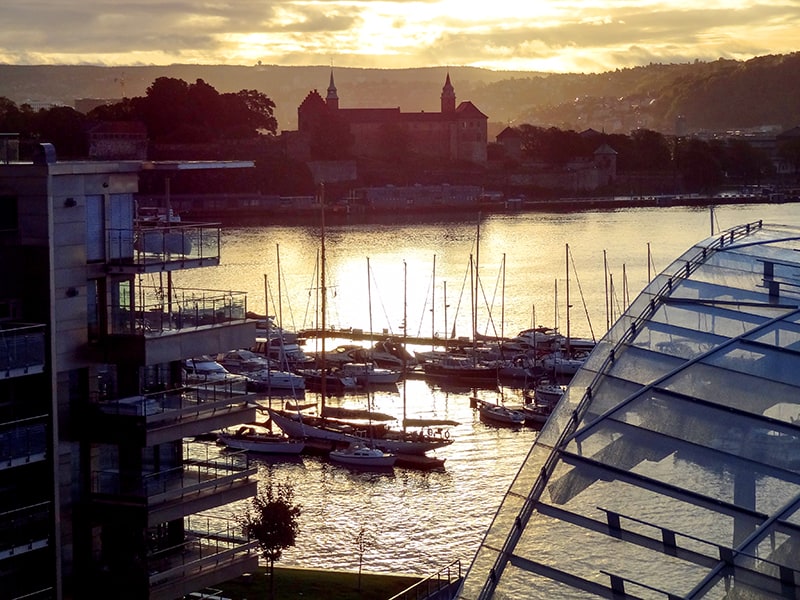
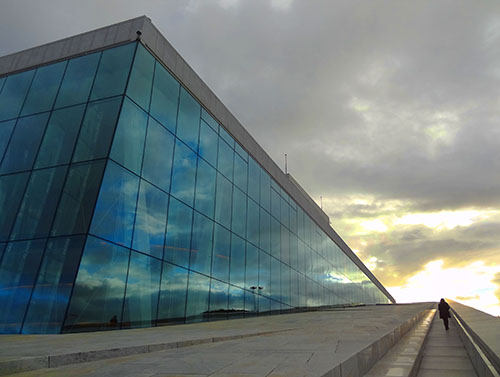
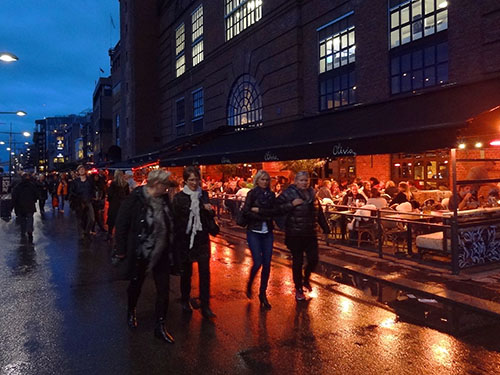
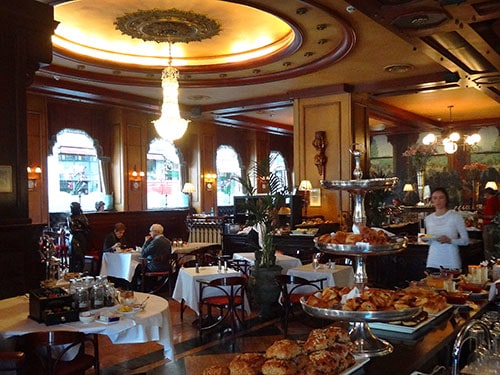
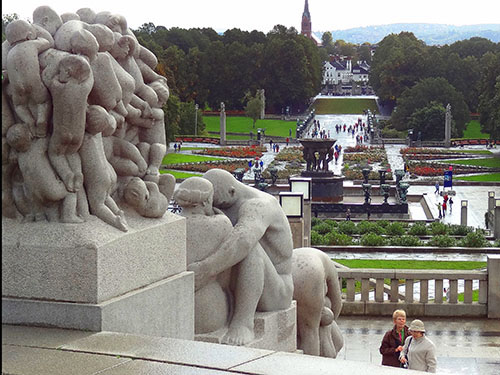
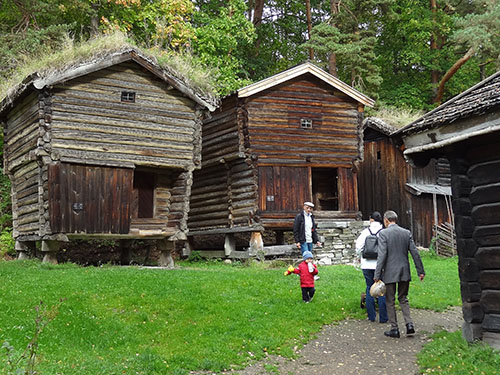
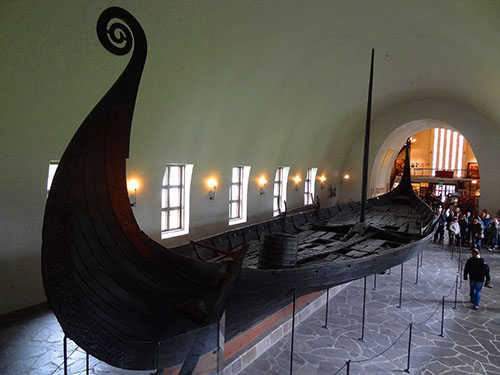
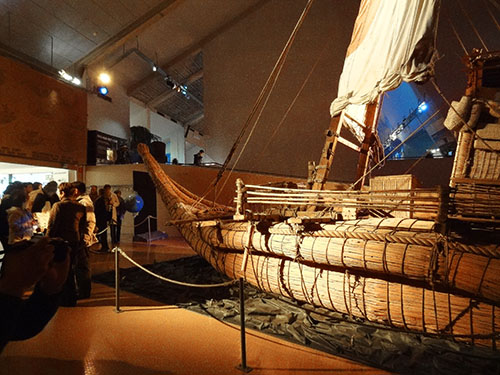
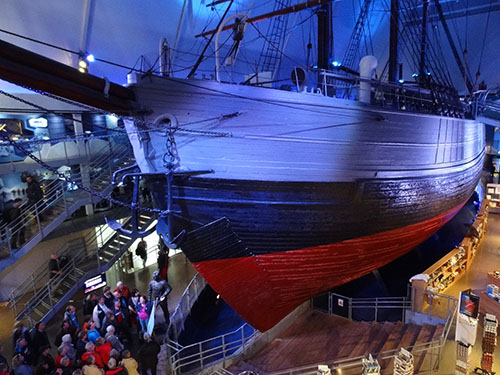
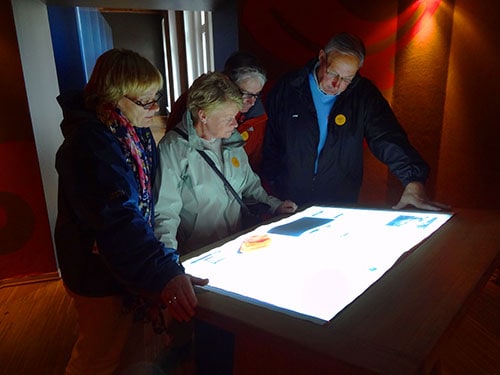
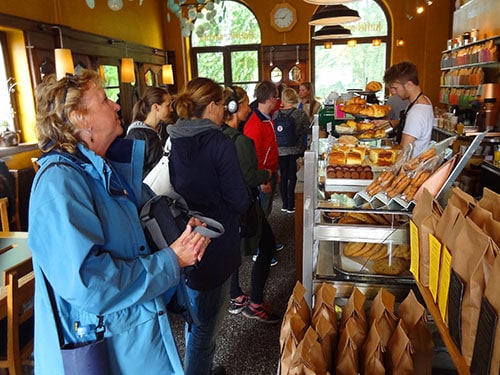
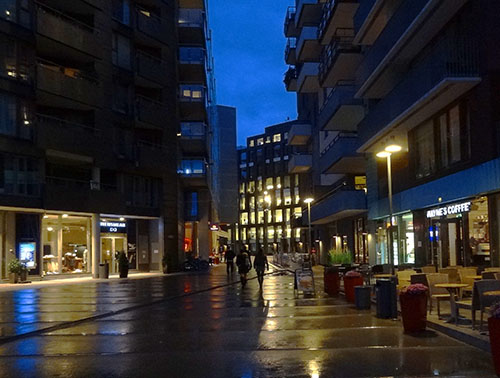
Hello, Jim — I’ve been remiss in not writing until now to tell you how much I really enjoy reading your articles (and looking at the wonderful pics!), ESPECIALLY during this bizarre period, when travel is a risky proposition. With regard to the latter, MANY thanks for your article about your horrifying experience flying AA, which we’ll avoid henceforth. We’ve been talking about going to Oslo when it’s safe to travel again , and it was great to read that Oslo’s not as expensive as we’d imagined! Btw, where did you stay? At The Thief, or somewhere less expensive (which would suit our budgets, to be honest)? THANK YOU for your site, which keeps us dreaming about traveling! Best wishes, Leo
Hi Leo – it’s good to hear from you. And thank you for the very kind words. Yes, these are awful times for all of us, especially travelers. I know of many travel bloggers who were trapped overseas when everything closed down. I almost was one of them but canceled my trip the day before I was to leave for Italy. My thanks to my persistent wife. BTW, I didn’t write the AA article…it was done by a friend and fellow blogger who went through that ordeal, and I wanted my readers to know about it, as well.
That’s great that you’ll be going to Oslo. I really enjoy that city. It has so many things to see. And yes, I stayed at The Thief thanks to the good people at the Norwegian Tourist Board.I don’t know what prices are like there right now since the entire world has been turned upside down by COVID.But when things start getting back to normal I think we’ll see a lot of deals being offered as everyone tries to win business back. I think that will be especially true with the airlines offering discounted packages. You may find a good hotel deal with Norwegian or SAS.
I don’t know how long you’re anticipating traveling, but did you ever read my article “How to Travel About Scandinavia on a Budget for 2 Weeks”? I know of a few readers who have replicated it and said they loved it. If you’re staying in Norway I’d also go to Bergen and then on the “Norway in a Nutshell” tour to the fjord and across the mountains on the Flam Railway. You can find out more about it in the article I did on Bergen.
I hope everything works out well for you. Let me know if I can help you in any way. Best regards, Jim
Thanks for the reply, Jim, and for pointing me to the article “How to travel about Scandinavia on a Budget for 2 weeks,” which I’ll definitely read! I actually spent 6 days in Bergen in August, 2009 and really loved the city and its wonderfully warm, friendly people. But I was floored by the hotel prices (a basic room with private bath in a hotel resembling a Howard Johnson’s for over $250) and what I had to pay for food ($30 for a pizza — ouch!)!! Given the staggering airfares these days (I’m not ready to travel yet, but I still check …), it hadn’t occurred to me that there’ll probably be a lot of deals when “normal” returns, because everyone will “try to win businesses back,” as you put it. I also hadn’t thought at all about discounted airfare/hotel packages with AIRLINES such Norwegian or SAS. So, a HUGE thank you for that tip! In 2012, I found a great airfare/hotel deal through Expedia for Florence, with our hotel room, which was regularly $400+, coming in under $225! I’ll definitely check out airline packages this time! Thanks again for all the work you do. I imagine that I’m not alone in saying that, during these troubled (and, for habitual travelers, stationary) times, your website is one to lift the spirits! Best wishes, Leo